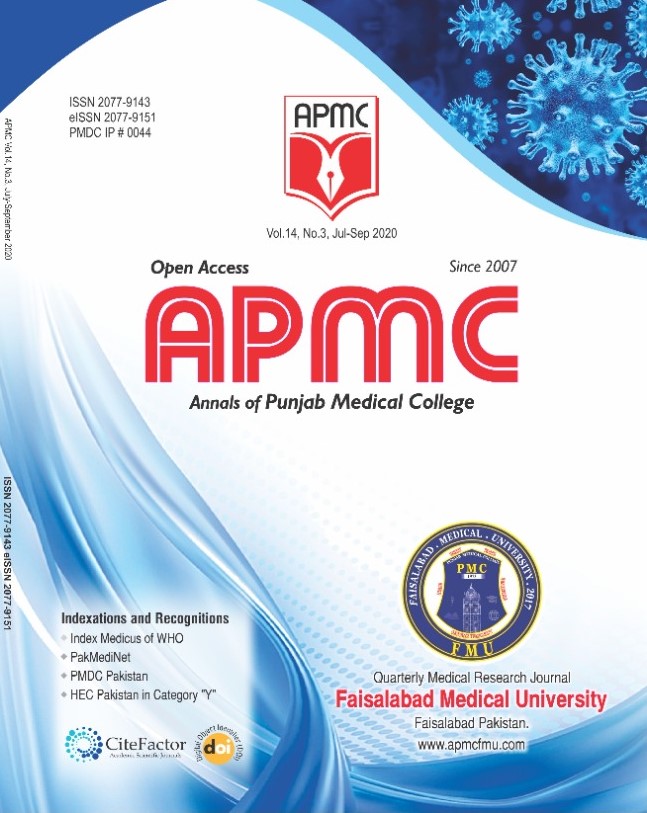Comparison of Axillary Lymph Node Dissection by Using Ligasure Vessel Sealing System Vs Conventional Thread Ligation in Patients Undergoing Modified Radical Mastectomy for Carcinoma of Breast
Abstract
Background: Breast Cancer is very common among women in Pakistan. Unfortunately, in our country patients present at late stage in teaching hospitals due to lack of awareness and traditional false beliefs. At this late stage modified radical mastectomy is the most common procedure carried out in our public sector hospitals. Traditional thread ligation is time consuming for axillary dissection. The modern vessel sealing devices are available. We aimed to compare the vessel sealing device Ligasure with the conventional method for axillary dissection during modified radical mastectomy. Objective: To compare conventional thread ligation method versus ligasure vessel sealing system use in axillary dissection for carcinoma breast in terms of mean post-operative drain output and mean number of days till drain removal. Study Design: Randomized Controlled Trial. Settings: The study was conducted in Department of Surgery, KEMU/ Mayo Hospital, Lahore-Pakistan. Duration: Seven months from 13-11-2018 to 13-05 2019. Methodology: After patients meeting inclusion criteria, they were prepared and underwent surgery. Patients were divided in two groups (group A and group B) Group-A patients underwent axillary dissection using Ligasure vessel sealing system while group-B patients underwent axillary dissection using traditional thread ligation. Drain outputs were recorded in Milliliters daily till drain output becomes less than 20 ml in preceding 24 hours. Drain removal day was noted. Data were analyzed using SPSS v20.0. t-test was used to compare the mean drain output and mean total number of days till drain removal in both groups. Data were stratified for age, BMI and tumor size to deal with effect modifiers. Post-stratification, t-test was applied. A p-value ≤0.05 was considered statistically significant. Results: A total of 112 patients were enrolled for this study. Patients were divided into two groups i.e. Group-A (Ligasure System) and Group-B (Conventional Method). In group-A, mean age was 45.8±18.2 years and 50.1±18.2 years in group-B. In group-A, mean drain volume was 500.1±60.8 ml and 665.3±84.9 ml in group-B with a p-value of 0.0001, which is statistically significant. In group-A, mean number of days till drain removal was 6.5±1.1 and 8.6±1.2 in group-B with a p-value of 0.0001, which is statistically significant. Conclusion: Axillary Lymph node dissection using Ligasure leads to decrease in mean post-operative drain output and mean number of days till drain removal as compared to conventional thread ligation method.

 This work is licensed under a
This work is licensed under a 